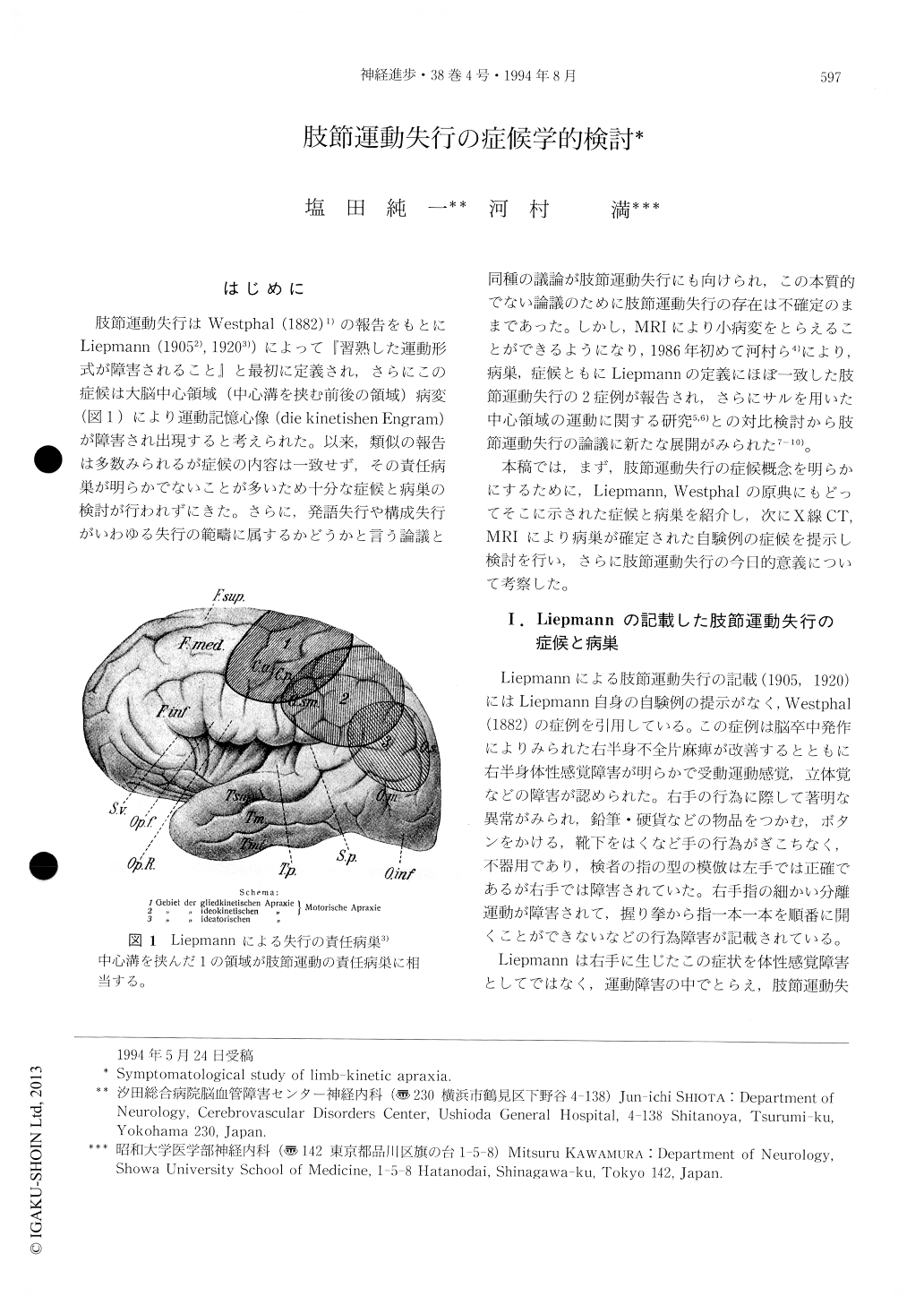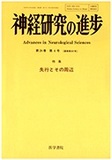Japanese
English
- 有料閲覧
- Abstract 文献概要
- 1ページ目 Look Inside
はじめに
肢節運動失行はWestphal(1882)1)の報告をもとにLiepmann(19052),19203))によって『習熟した運動形式が障害されること』と最初に定義され,さらにこの症候は大脳中心領域(中心溝を挟む前後の領域)病変(図1)により運動記憶心像(die kinetishen Engram)が障害され出現すると考えられた。以来,類似の報告は多数みられるが症候の内容は一致せず,その責任病巣が明らかでないことが多いため十分な症候と病巣の検討が行われずにきた。さらに,発語失行や構成失行がいわゆる失行の範疇に属するかどうかと言う論議と同種の議論が肢節運動失行にも向けられ,この本質的でない論議のために肢節運動失行の存在は不確定のままであった。しかし,MRIにより小病変をとらえることができるようになり,1986年初めて河村ら4)により,病巣,症候ともにLiepmannの定義にほぼ一致した肢節運動失行の2症例が報告され,さらにサルを用いた中心領域の運動に関する研究5,6)との対比検討から肢節運動失行の論議に新たな展開がみられた7-10)。
本稿では,まず,肢節運動失行の症候概念を明らかにするために,Liepmann,Westphalの原典にもどってそこに示された症候と病巣を紹介し,次にX線CT,MRIにより病巣が確定された自験例の症候を提示し検討を行い,さらに肢節運動失行の今日的意義について考察した。
Limb-kinetic apraxia was first described by Liepmann (1905, 1920), who postulated the cause to be a lesion in the anterior or posterior area of the central fissure (central region). We analyzed 10 cases of limb-kinetic apraxia caused by a localized lesion of the central region. All patients showed apparent clumsiness in intentional movements, imitation and object manipulation in the contralateral hand. Patients who had a localized lesion in the precentral gyrus showed the same symptoms as those with a lesion in the postcentral gyrus.

Copyright © 1994, Igaku-Shoin Ltd. All rights reserved.


